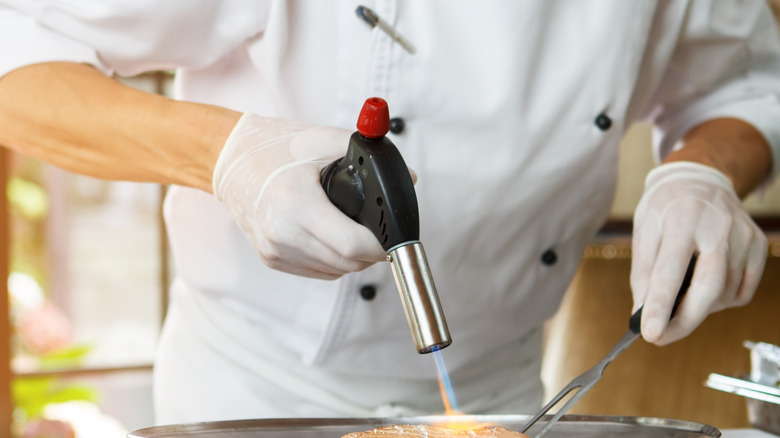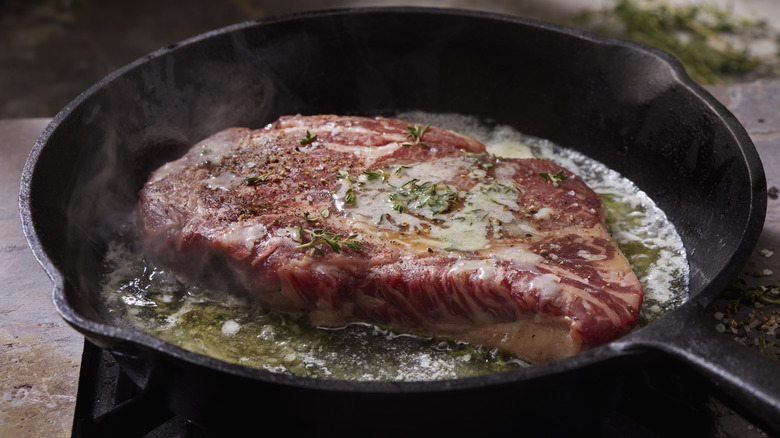Is There Ever A Good Reason To Blow Torch A Steak?
Steak is a food that's so straightforward in its essence, yet it can simultaneously feel nerve-racking to prepare. Perhaps it's the indecisive nature of selecting common steak cuts and knowing the best way to cook them. Or maybe it's the self-doubt that strikes manning the grill or pan, unsure if that expensive hunk of meat will be ruined by overcooking. Really though, there's no secret; it's all about procuring a nice cut, and following up with a tried and true cooking method.
Possible techniques might involve the pan, the grill, and maybe a sous vide machine if you're feeling experimental. Not on the list: a blow torch. While there are some gadget-minded folks promoting the contraption, the cons outweigh the pros. For one, searing a steak well means creating an even crust, and by design, this jet-fueled flame heats in a specific area. Furthermore, it cranks up the temperature too much — over 2,000 degrees Fahrenheit — which means burning is impossible to prevent. The meat will likely taste bitter in spots and possess whiffs of gas, making it an unsavory flavor. Throw in the increased risk of fire and burn hazards, and it's evident why this option hasn't integrated with the old-school methods.
Blow-torching steak applies too much direct heat
Learning how to pan sear steak — or mastering the grill — means knowing how to achieve uniformity. The ideal crust and interior comes by way of consistent temperature control, as well as frequent turning of the cut, ensuring consistent cooking. This makes cast irons a beloved choice — their excellent insulating properties make them great at retaining heat. For the same reason, the best method for grilling steaks is to keep the meat over indirect heat. And although less viscerally entertaining, the sous vide is perhaps best at the task, as it'll perfectly maintain the temperature.
Noting the perks of each respective method, it becomes clear that the blow torch's strong suits don't align with such qualities. The contraption is built to concentrate an incredible magnitude of heat into one location. It'll function a little better on a very thin steak and with a metal screen to distribute heat — this keeps cooking brisk. And it can also crisp up the exterior after a sous vide, although the pan works well for such applications, too.
However, using it standalone on a larger cut, you'll be wielding a lot of power and you'll have to quickly move it around the beef. It's not a dependable move; it sets up the potential of overcooking. Sure, wielding a torch is undeniably eye-catching, but with many other great techniques in place, there's no necessity to reach for the device.

